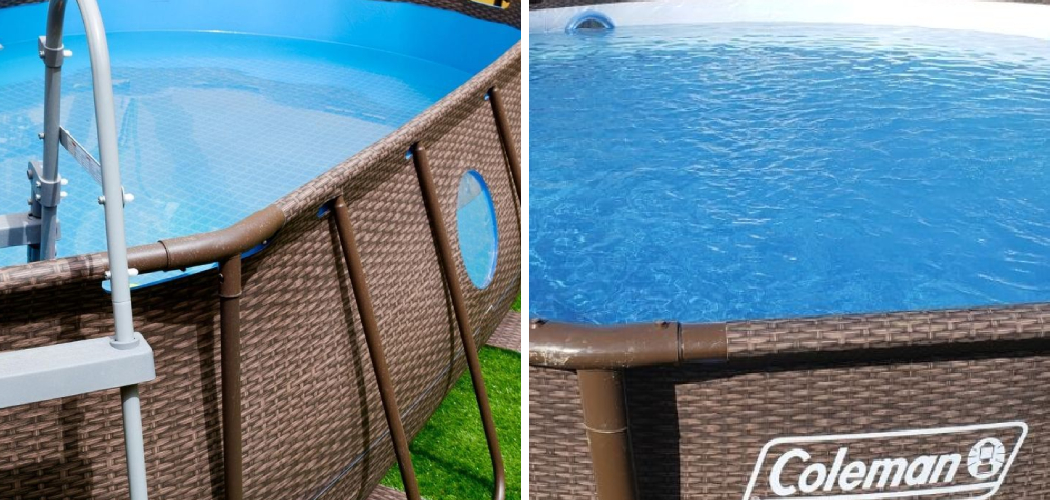Draining a Coleman Power Steel Pool is an essential maintenance routine that not only preserves the pool’s structural integrity but also ensures the safety and cleanliness of the swimming environment. This guide on how to drain a Coleman Power Steel Pool will walk you through the process, highlighting the critical steps and considerations to make the task seamless and effective.
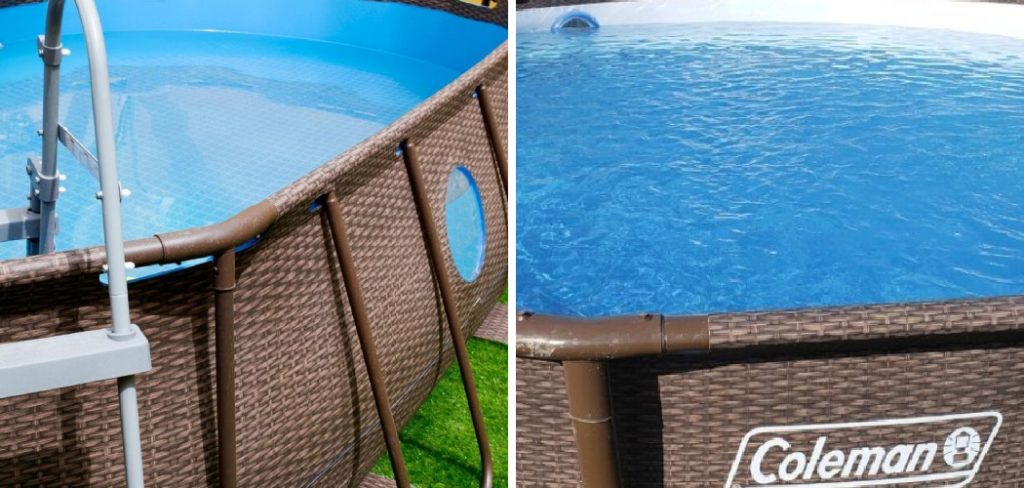
Draining the pool serves multiple purposes, ranging from preparing it for the off-season to addressing water quality issues and facilitating repairs or renovations. Regular drainage and maintenance are pivotal in extending the lifespan of your pool, preventing algae growth, and maintaining the chemical balance of the water, safeguarding both the pool’s fabric and the health of its users.
Understanding the why and how of draining your Coleman Power Steel Pool is the first step towards ensuring many seasons of enjoyment and use.
Understanding the Pool System
To facilitate a smooth and safe drainage process, it’s crucial to have a comprehensive understanding of your Coleman Power Steel Pool’s system. This includes familiarizing yourself with its key components, identifying where the drainage points are located, and acknowledging the safety considerations before initiating the drainage.
A. Overview of Coleman Power Steel Pool Components
The Coleman Power Steel Pool is designed with durability and user-friendliness in mind. Its components include the metal frame structure that provides robust support, the liner that holds the water, and the filter pump system that keeps the water clean.
Additional accessories might include a ladder for easy access, a cover to keep debris out when the pool is not in use, and possibly a skimmer to remove surface debris.
B. Identification of Drainage Points and Equipment
Drainage points are typically located at the lowest part of the pool to facilitate complete water removal. Coleman Power Steel Pools usually come equipped with a built-in flow control drain valve that connects to a garden hose, allowing for controlled and directed water drainage.
It is important to ensure that the area where you intend to drain the water can accommodate the volume and comply with local water disposal regulations.
C. Safety Considerations Before Initiating Drainage
Safety is paramount when draining your pool. Always turn off and disconnect the pool pump and any electrical devices associated with the pool to prevent accidents. Consider wearing protective gear if you’re handling pool chemicals or if the process involves manual labor.
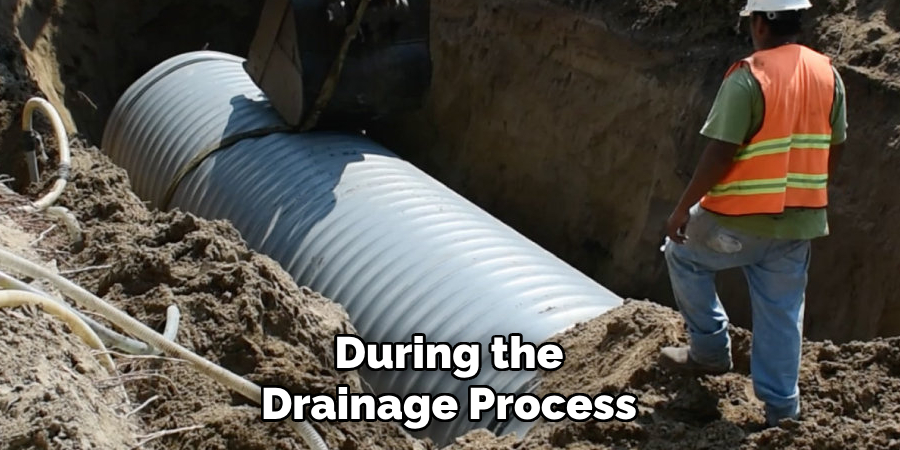
Ensure that children and pets are kept at a safe distance during the drainage process. Lastly, be mindful of where the drained water is routed to avoid flooding or damage to your property or the environment.
Reasons for Draining the Pool
Draining a Coleman Power Steel Pool is not a task to undertake lightly, given the water volume and the effort involved. However, specific situations necessitate this procedure to ensure the pool’s longevity and the safety of its swimmers.
A. Seasonal Maintenance and Cleaning
One primary reason for draining your pool is for seasonal maintenance. Before winter, it’s advisable to drain the pool to prevent water from freezing and potentially damaging the pool structure.
This period is also an optimal time for thorough cleaning, as it allows you to remove any debris, algae, or sediment that has accumulated over the swimming season. This cleaning ensures that your pool remains in pristine condition, ready for the next year.
B. Addressing Water Quality Issues
Despite regular chemical treatment and filtering, water quality issues may require a complete water change. Situations such as severe chemical imbalances, persistent algae blooms, or contamination by foreign substances can necessitate draining the pool. Starting fresh with new water allows for resetting the chemical balance and ensuring a healthy swimming environment.
C. Performing Repairs or Renovations
Finally, significant repairs or renovations to your Coleman Power Steel Pool will often require draining. Whether it’s fixing leaks, replacing the liner, or upgrading pool components, having an empty pool provides the necessary access and space to work safely and efficiently.
This also presents an excellent opportunity to inspect the pool structure for any potential issues that need addressing, ensuring that your pool remains safe and enjoyable for years to come.
Safety Precautions
Ensuring safety during the pool draining process is crucial to prevent any accidents or damage to your property. Firstly, before initiating the drainage, it is imperative to disconnect all electrical equipment associated with the pool, including pumps and lighting systems, to eliminate the risk of electrocution. Always follow the manufacturer’s instructions for shutting down and disconnecting this equipment.
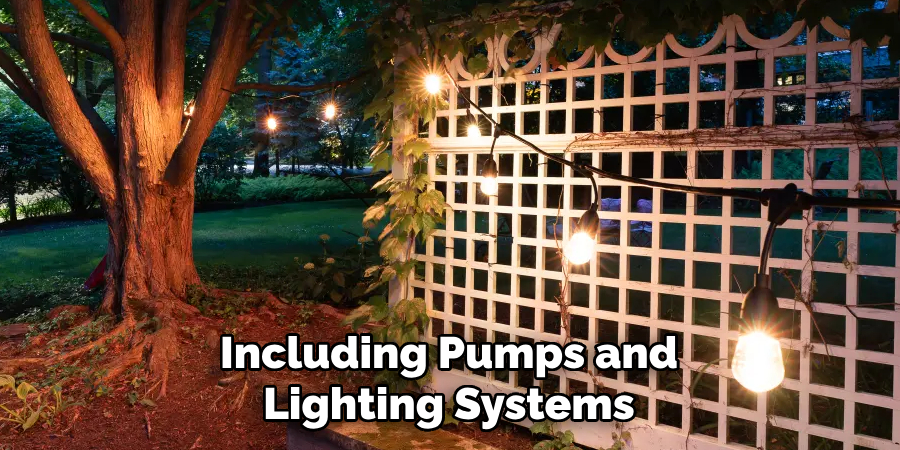
When handling pool chemicals, wear appropriate protective gear to avoid skin and eye irritation. Chemicals should be stored and handled according to their labels and kept away from children and pets. Additionally, ensure chemicals are not mixed during the draining process, as this can create hazardous fumes or reactions.
Keeping the area clear and informing all household members of the ongoing process can prevent accidental falls or slips near the pool. It’s also essential to monitor the drainage process to prevent water from flooding your own or your neighbor’s property, which could lead to water damage or disputes.
Lastly, considering the environmental impact, the drained water should be disposed of in a manner compliant with local regulations. This step is vital to avoid contaminating local water sources or harming the ecosystem. By adhering to these safety precautions, you can ensure a safe and efficient draining process for your Coleman Power Steel Pool.
Testing Water Quality
Maintaining optimal water quality in your Coleman Power Steel Pool is crucial for the health and safety of swimmers, as well as for the longevity of the pool itself. Regular testing and adjusting of the water’s chemical balance can prevent the need for drastic measures such as complete drainage. Here’s how to approach water quality testing and maintenance:
A. Performing Water Testing for pH, Chlorine, and Alkalinity Levels
Water testing should be a routine part of your pool maintenance schedule. Test strips or a liquid test kit can be used to measure the levels of pH, chlorine, and alkalinity in the pool water.
The ideal pH level for pool water is between 7.4 and 7.6. Chlorine levels should be maintained at 1-3 ppm (parts per million) to effectively sanitize the pool without causing irritation to swimmers. Alkalinity, acting as a pH buffer, should be kept between 100-150 ppm. Regular testing enables the early detection of imbalances, allowing for prompt adjustments to be made.
B. Addressing Water Balance Issues Before Drainage
Before considering drainage as a solution to water quality issues, attempt to correct any imbalances through chemical treatment. Adjusting the levels of chlorine, pH up or down, and alkalinity increaser or decreaser can often rectify the problem without the need to drain and refill the pool. This not only saves water and effort but also minimizes the environmental impact of pool maintenance.
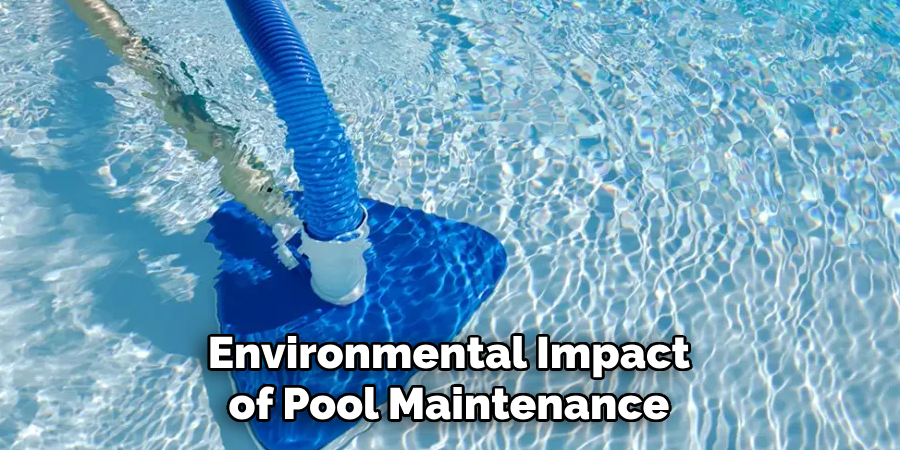
C. Understanding the Impact of Water Chemistry on Pool Components
The chemical balance of pool water has a direct effect on the integrity of pool components. Incorrect pH levels can lead to corrosion of metal parts or pool liner degradation. High chlorine levels can prematurely wear out pool accessories and even cause discomfort for swimmers.
Ensuring that the water chemistry is within the recommended bounds protects your investment and ensures a safe swimming environment. Regular monitoring and adjustment of water chemistry are part of responsible pool ownership and can significantly reduce the likelihood of needing to perform major maintenance tasks, including draining the pool.
Preparing Equipment and Supplies
Before initiating the draining process for your Coleman Power Steel Pool, having all the necessary equipment and supplies on hand is pivotal. This preparation ensures a smooth and efficient drainage process, minimizing the risk of delays or problems.
A. Gathering Necessary Tools for the Drainage Process
Begin by assembling all required tools. You will need a submersible pump, which is essential for efficiently removing water from the pool. Ensure you also have sufficient lengths of discharge hose to direct the water from the pool to the designated drainage area — which should be determined based on local regulations and environmental considerations.
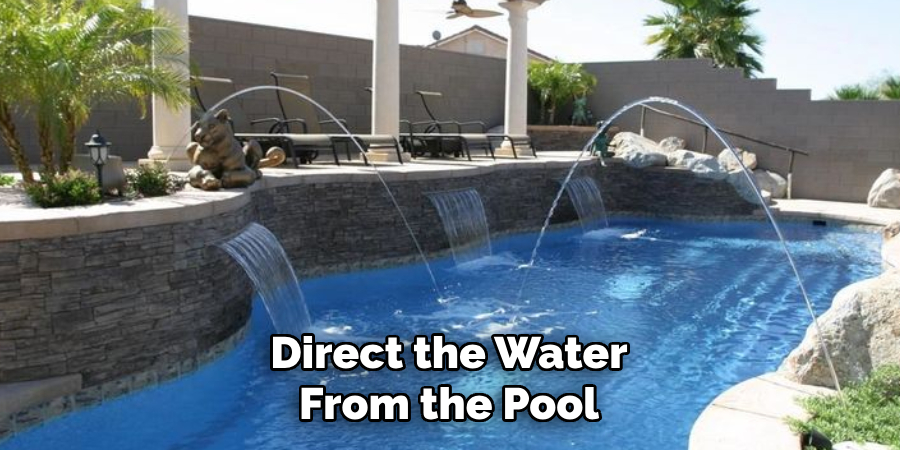
Additionally, gather other tools such as pliers or a screwdriver, which may be needed to secure hose connections or perform minor adjustments to the pump or pool fixtures.
B. Checking Functionality of Pump and Hoses
Before proceeding with the drainage, thoroughly check the condition and functionality of the submersible pump and hoses. Inspect the pump for any signs of damage or wear that could affect its operation.
Test the pump in a container of water to ensure it works correctly and efficiently. Similarly, examine the hoses for any leaks, cracks, or weak connections that could lead to water spillage or inefficient drainage. Replace or repair any faulty equipment prior to starting the pool drainage.
C. Securing Storage Containers for Drained Water
If the drained water is to be stored for later use, or if local regulations require controlled disposal, secure appropriate storage containers. These containers must be large enough to hold the volume of water you plan to drain and should be made of a material that can withstand the weight.
Ensure the containers are clean and free of substances that could contaminate the water. Position these containers strategically to facilitate easy transfer of water from the pool through the pump and hoses.
How to Drain a Coleman Power Steel Pool: Initiating Drainage Process
Initiating the drainage process of your Coleman Power Steel Pool requires careful attention to ensure it’s done efficiently and safely. The following steps guide you through the initial phase of draining your pool.
A. Turning off Pool Equipment and Power Sources
Before starting the drainage process, it’s essential to turn off all pool equipment, including pumps, filters, heaters, and any electrical sources connected to the pool’s operation. This precaution prevents equipment damage and ensures the safety of anyone involved in the drainage process. Disconnecting or turning off the power at the circuit breaker provides an additional layer of safety and helps avoid accidental electrical incidents.
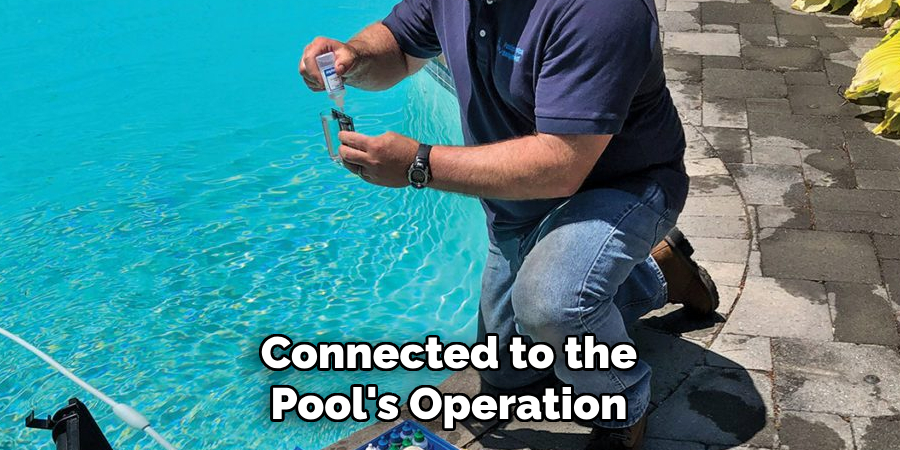
B. Attaching Pump to Drainage Port or Siphoning System
The next step involves setting up the submersible pump or establishing a siphoning system. If using a pump, connect it to the pool’s drainage port, ensuring a tight and secure connection to prevent leaks. For pools without a dedicated drainage port, a siphoning system may be employed.
This can be achieved by using a hose to manually start the siphon process, making sure the discharge end is at a lower elevation than the pool to facilitate water flow. Whether using a pump or siphoning, ensure the discharge hose leads to an area designated for drained water according to local regulations or your predetermined disposal plan.
C. Allowing Water to Flow Out Slowly and Evenly
Once the pump is in place and connected, or the siphon has been started, allow the water to begin flowing out of the pool slowly and evenly. Monitoring the water flow is crucial to avoid any sudden shifts in pool structure or integrity as the water level decreases.
A controlled, gradual drainage helps maintain the pool’s structure and prevents potential damage to the pool liner or frame. It’s important to periodically check the discharge area to ensure the water is draining away properly and not causing flooding or erosion. Adjust the flow rate if necessary to accommodate the receiving area’s capacity to absorb or store the drained water.
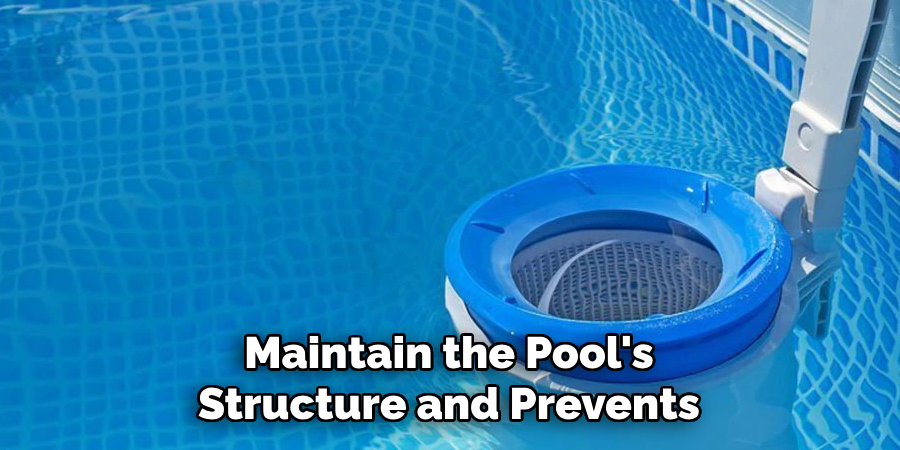
By carefully following these steps, you can initiate the drainage process of your Coleman Power Steel Pool with confidence, knowing that the process is being carried out safely and in compliance with necessary precautions and regulations.
How to Drain a Coleman Power Steel Pool: Monitoring Drainage Progress
During the drainage process of your Coleman Power Steel Pool, it is vital to consistently monitor several key elements to ensure the procedure is progressing smoothly and efficiently. Observing the water level closely allows you to gauge the pace of the drainage and identify any potential issues early on.
The flow rate of the water being expelled is another crucial factor to monitor. If the water is being pumped out too quickly, it may destabilize the pool structure; conversely, a slow rate could unnecessarily prolong the process.
Adjusting the pump’s position or flow rate may be necessary to maintain the optimal balance between efficiency and safety. For instance, if the water level is dropping unevenly, repositioning the pump to different areas of the pool floor can help achieve a more uniform drainage. Similarly, adjusting the flow rate can prevent issues such as erosion or flooding in the discharge area.
If the drained water is being collected for storage, ensuring the pump’s flow rate matches the storage containers’ capacity is essential to avoid overflows. By attentively monitoring these aspects and making adjustments as required, you can facilitate a smooth and effective drainage process for your pool.
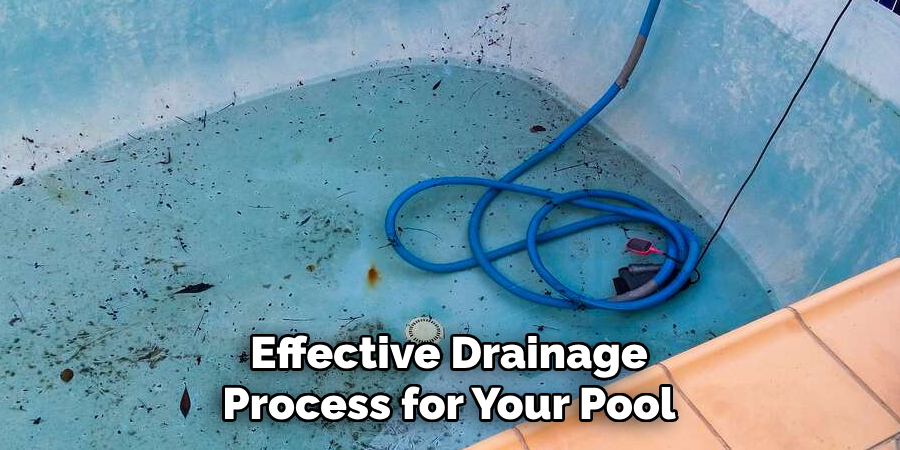
Completing the Drainage and Post-Drainage Activities
Once the drainage process is nearing completion, it’s crucial to remain vigilant and ensure that all steps are concluded properly to prevent any potential issues. The final stages of draining your Coleman Power Steel Pool involve a few key actions that will help secure the pool and prepare it for its next use or storage.
A. Observing Final Water Levels and Ensuring Complete Drainage
Pay close attention as the water level approaches the bottom of the pool. Ensuring that all water is completely drained is essential, especially in pockets or depressions on the pool floor. This may require repositioning the pump one last time to areas with residual water. Complete drainage prevents the growth of mold and mildew and protects the pool liner from damage.
B. Disconnecting and Storing the Pump and Hoses
Immediately disconnect the pump and hoses after all the water has been drained. Thoroughly clean and dry them before storage to prevent any damage or deterioration while not in use. Proper storage extends the life of these crucial components and ensures they are ready for the next pool season.
C. Inspecting the Pool for Damage or Wear
With the pool empty, it is the perfect time to inspect the liner, frame, and all associated components for any signs of damage, wear, or areas that may need repair. Addressing these issues while the pool is empty is easier and prevents bigger problems in the future.
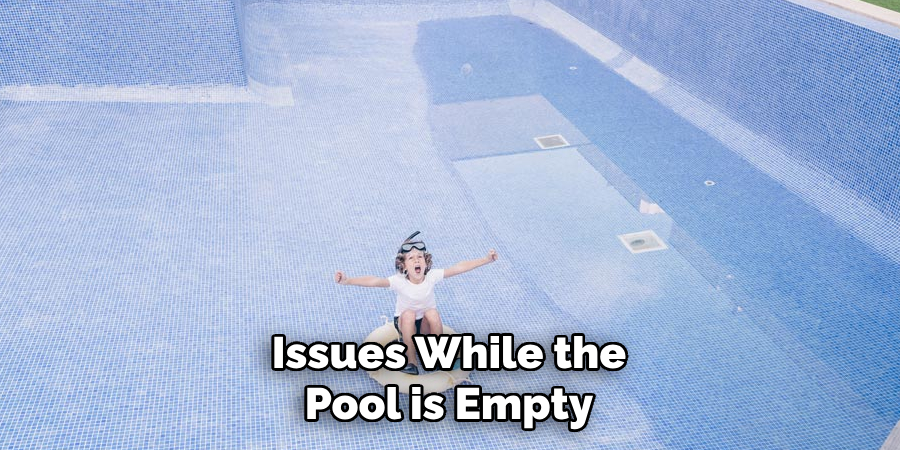
D. Preparing the Pool for Its Next Use or Storage
Depending on the time of year and your future plans for the pool, take the necessary steps to either prepare the pool for storage or get it ready for refilling. This might include tightening loose frame connections, cleaning the pool liner, or covering the pool to protect it from debris.
By methodically following these post-drainage activities, you will ensure the longevity of your pool and maintain its readiness for enjoyment in the seasons to come.
Cleaning and Maintenance
Proper cleaning and maintenance are crucial to extending the lifespan of your Coleman Power Steel Pool and ensuring it provides endless hours of summer fun. After completing the drainage, the pool is now ready for a thorough cleaning and inspection that will set the foundation for a healthy and safe swimming environment.
A. Scrubbing Pool Walls and Floor to Remove Debris and Algae
Start by scrubbing the walls and floor of the pool using a pool brush designed for your pool’s specific liner material to remove any debris, algae, or buildup. Pay special attention to corners and crevices where algae tend to accumulate.
For stubborn areas, a pool-safe cleaning solution may be applied to assist in breaking down the algae or buildup before scrubbing. Rinse the walls and floor thoroughly after scrubbing to ensure all debris and cleaning solutions are removed.
B. Inspecting Pool Components for Wear or Damage
With the pool empty, closely inspect all components, including the liner, frame, and filtration system, for signs of wear or damage. Check for tears in the liner, rust or corrosion on the frame, and any signs that the filtration system may not be operating at full efficiency. Repair or replace any damaged parts to prevent future problems.
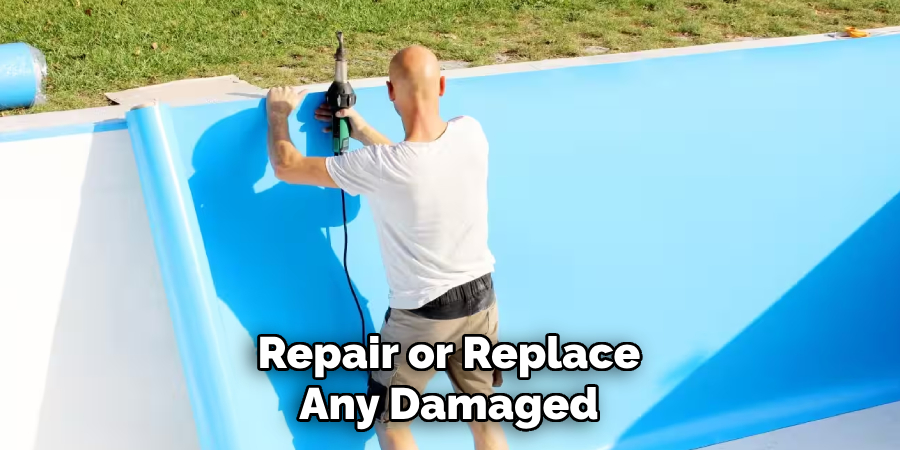
C. Performing Routine Maintenance Tasks Before Refilling
Before refilling the pool, complete routine maintenance tasks to ensure optimal operation. This includes cleaning or replacing the filter, checking the pH and chlorine levels if applicable, and ensuring the pump and hoses are in good working condition. It’s also an excellent time to lubricate fittings and seals, if necessary, to ensure smooth operation throughout the swimming season.
By diligently following these cleaning and maintenance steps, you’ll ensure your Coleman Power Steel Pool remains a safe, clean, and enjoyable place for family and friends to gather.
Storing Pool Equipment and Supplies
Proper storage of pool equipment and supplies is crucial for maintaining their condition and ensuring they are ready for use when the pool season rolls around again. Careful attention to how these items are stored can prevent damage and extend their lifespan, saving time and money in the long run.
A. Properly Storing Pump, Hoses, and Accessories to Prevent Damage
After thorough cleaning and drying, store the pump, hoses, and other pool accessories in a cool, dry place. If possible, keep these items off the floor to protect them from moisture and potential pests.
Use original packaging or containers designed for storage to keep parts organized and safeguarded from physical damage. Before storing, inspecting each item for any signs of wear or damage that could be addressed before the next pool season is wise.
B. Securing Chemicals and Cleaning Tools in a Safe and Accessible Location
Pool chemicals should be stored in a secure, dry area out of reach of children and pets, ideally in a locked cabinet or shed. Ensure that chemicals are kept in their original containers with labels intact, and never store chemicals together that could react if they come into contact.
Cleaning tools should be hung or placed in a tidy, organized way to keep them in good condition and ready for use. Proper organization not only extends the life of these tools but also ensures that they are easily accessible for routine maintenance and emergency situations.
Recap of Key Points
Ensuring the longevity and optimal function of a Coleman Power Steel Pool necessitates adhering to a comprehensive routine of proper drainage and maintenance. The process begins with careful drainage, ensuring all water is entirely removed from the pool to prevent mold, mildew, and potential damage to the pool liner.
Following the drainage, disconnecting, cleaning, and storing the pump and hoses are critical to avoid deterioration and extend their usability. Inspection of the pool for any signs of wear or damage is paramount; addressing these issues promptly can prevent more significant problems.
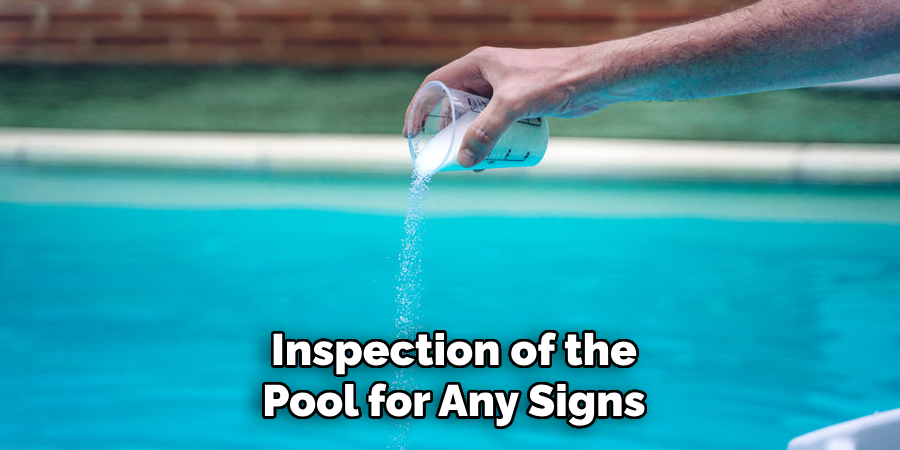
Additionally, proper cleaning and maintenance, including scrubbing pool walls and floors, inspecting all components for damage, and performing routine maintenance tasks, are integral steps to prepare the pool for its next use or storage. Adhering to these key steps and safety precautions ensures that your Coleman Power Steel Pool remains a clean, safe, and inviting place for enjoyment.
Final Thoughts
Regular maintenance and following proper drainage procedures are crucial for extending the lifespan of your Coleman Power Steel Pool. This guide, highlighting “how to drain a Coleman Power Steel Pool,” serves not only as a step-by-step manual but also as a testament to the importance of care and diligence in pool ownership.
By adhering to these outlined steps, you ensure a hassle-free drainage process that significantly contributes to the longevity and safety of your pool. Remember, the effort you put into maintaining your pool not only enhances its durability but also enriches the endless hours of joy and relaxation it provides.
Encourage every pool owner to make these practices a regular part of their pool care routine, ensuring that their Coleman Power Steel Pool remains a source of pride and pleasure for many seasons to come.

